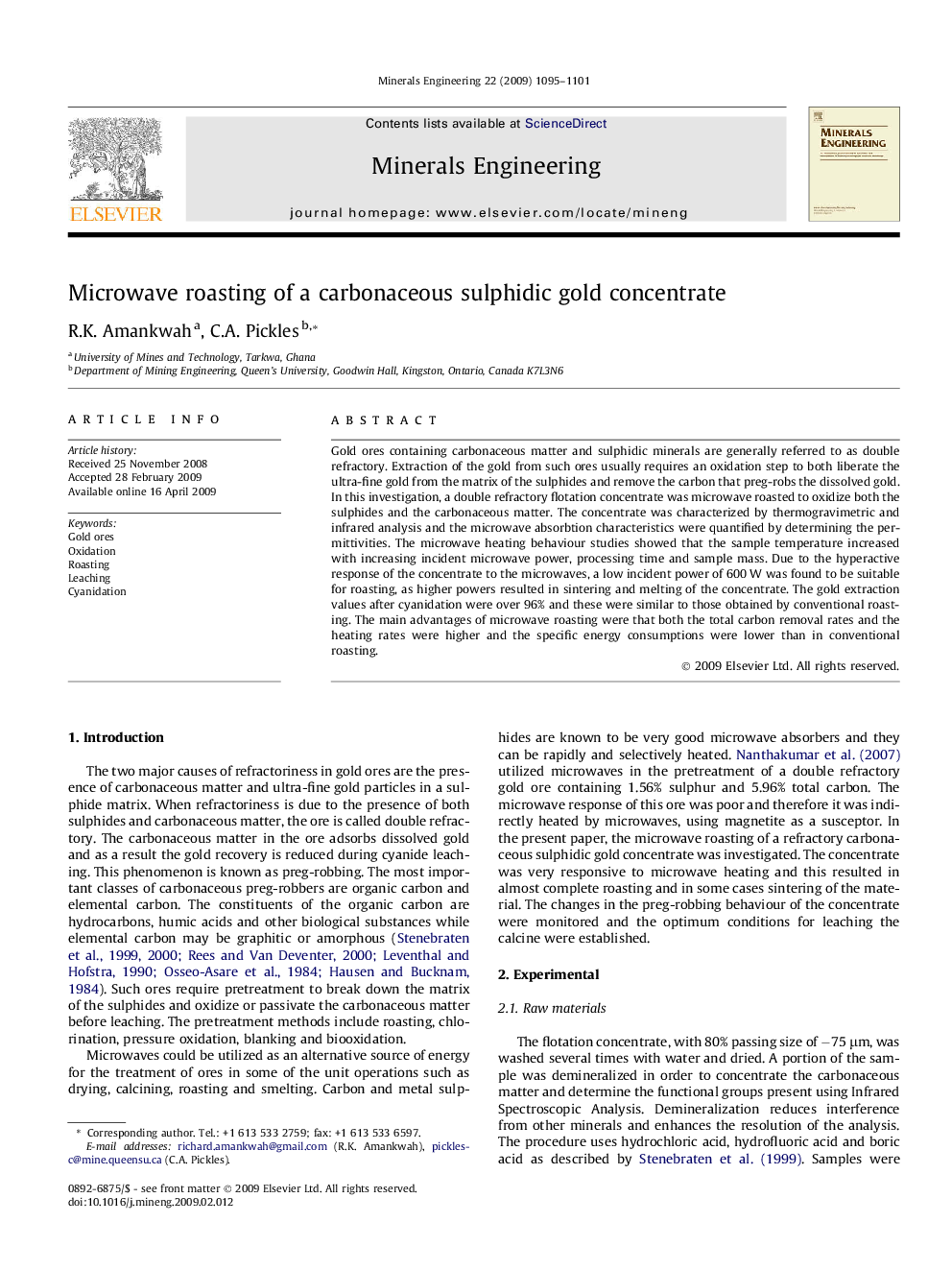| Article ID | Journal | Published Year | Pages | File Type |
|---|---|---|---|---|
| 234089 | Minerals Engineering | 2009 | 7 Pages |
Gold ores containing carbonaceous matter and sulphidic minerals are generally referred to as double refractory. Extraction of the gold from such ores usually requires an oxidation step to both liberate the ultra-fine gold from the matrix of the sulphides and remove the carbon that preg-robs the dissolved gold. In this investigation, a double refractory flotation concentrate was microwave roasted to oxidize both the sulphides and the carbonaceous matter. The concentrate was characterized by thermogravimetric and infrared analysis and the microwave absorbtion characteristics were quantified by determining the permittivities. The microwave heating behaviour studies showed that the sample temperature increased with increasing incident microwave power, processing time and sample mass. Due to the hyperactive response of the concentrate to the microwaves, a low incident power of 600 W was found to be suitable for roasting, as higher powers resulted in sintering and melting of the concentrate. The gold extraction values after cyanidation were over 96% and these were similar to those obtained by conventional roasting. The main advantages of microwave roasting were that both the total carbon removal rates and the heating rates were higher and the specific energy consumptions were lower than in conventional roasting.
